Orthodontic relapse refers to the subtle or obvious shift of teeth after treatment, and recognizing the signs is key to maintaining your smile. Key orthodontic relapse signs include noticeable changes in tooth alignment, emerging gaps, discomfort due to bite issues, and retainers not fitting as they used to.
Regular monitoring and early detection help prevent more significant shifts. In this article, explore detailed solutions to address and prevent orthodontic relapse effectively.
Understanding Orthodontic Relapse
Orthodontic relapse occurs when teeth slowly shift back to their pre-treatment positions after braces or aligners are removed. Understanding why this happens and recognizing the signs can help you take proactive steps to maintain your beautiful smile long-term.
What Causes Orthodontic Relapse?
Several factors contribute to orthodontic relapse, and understanding them is crucial:
- Not Wearing Retainers: The most common cause of relapse is failing to wear retainers consistently after treatment. Retainers hold teeth in their new positions while supporting the surrounding tissues to stabilize.
- Biological Changes: As we age, natural growth and anatomical changes can also contribute to minor tooth movement. This includes changes in the jawbone and surrounding tissues.
- Tooth Memory: Teeth have a natural inclination, often referred to as "tooth memory," which can cause them to revert to previous positions if not adequately supported.
- Periodontal Fibers: These fibers tend to pull teeth back into their original positions once the orthodontic appliances are removed, emphasizing the need for retention.
Recognizing these causes helps you adhere to post-treatment guidelines and avoid potential setbacks.
Why Is Orthodontic Relapse Common?
Orthodontic relapse is common because your teeth are influenced by many factors even after treatment:
- Lack of Retention Phase: Successful orthodontic treatment doesn't end with the removal of braces or aligners. It requires a well-managed retention phase which, if neglected, can lead to relapse.
- Jaw Growth: Young patients might experience significant jaw growth after braces, impacting the alignment of teeth.
- Lifestyle and Habits: Habits like grinding, clenching, or even patterns in chewing can affect tooth stability over time.
Being aware of these contributing factors allows you to be more vigilant and commit to maintaining your orthodontic results.
Key Signs of Orthodontic Relapse
Spotting signs of orthodontic relapse early helps in determining the right course of corrective action. Let’s explore the common indicators that you may notice post-treatment.
Changes in Tooth Alignment
You might notice slight shifts in your teeth's alignment soon after treatment. Pay attention to small changes, such as:
- Spacing and Crowding: If you see gaps reappearing or observe crowding in areas that were previously corrected, this can indicate relapse.
- Misaligned Teeth: Teeth that appear slightly rotated or out of their adjusted position are a clear sign of movement.
Bite Issues Reappearing
Bite issues can subtly return without immediate discomfort, but over time you might feel:
- Uneven Bite Pressure: Chewing might feel different, or specific teeth experience more contact than others.
- Jaw Discomfort: Changes in the bite often lead to jaw discomfort or clicking sounds when chewing.
These indicators should prompt you to schedule an assessment with your orthodontist for a detailed evaluation.
Retainers Not Fitting Properly
A telltale sign of relapse is when your retainer doesn’t fit as snugly as it should. This change suggests that your teeth have shifted:
- Tight or Loose Fit: A retainer that feels too tight or loose is a sign that your teeth are moving.
- Retention Difficulty: If you struggle to wear your retainer as you used to, it’s crucial to address the change before it exacerbates.
Being proactive about these signs can mitigate the level of correction needed and simplify the process of re-stabilizing your teeth.
Causes of Orthodontic Relapse
Understanding the underlying reasons for orthodontic relapse empowers you to make informed decisions about corrective measures and preventive care.
Inadequate Retainer Use
Once your braces come off, retainers quickly become your best friend. However:
- Neglecting Retainer Guidelines: Failing to adhere strictly to your orthodontist's instructions on retainer wear can allow teeth to drift easily.
- Inconsistent Use: Wearing retainers sporadically or just at night when continuous wear is required affects their effectiveness.
Anatomical Shifts
Natural anatomical changes affect long-term dental alignment:
- Continual Tooth Eruption: As teeth continue to grow post-treatment, they can influence the alignment achieved with braces.
- Changes in Facial Structure: Normal aging and jaw growth can subtly affect how teeth settle over time, contributing to shifts.
Recognizing these natural tendencies allows you to maintain vigilance with your retention measures.
Lifestyle Habits and Forces
Certain lifestyle factors and forces affect tooth stability:
- Oral Habits: Habits such as nail-biting, tongue thrusting, and grinding can shift teeth unintentionally.
- Dentition Wear and Tear: Over time, the daily pressures and movements involved in chewing can alter teeth positions slowly.
Understanding these causes helps you maintain the correct lifestyle adjustments and habits to protect your orthodontic investment.
The Role of Retainers in Preventing Relapse
Retainers are essential in ensuring your teeth stay aligned post-treatment, and understanding their role highlights the importance of consistent use.
Why Are Retainers Essential?
Retainers maintain the corrected positions of your teeth:
- Prevention of Movement: Retainers apply gentle pressure to prevent teeth from drifting.
- Support for Surrounding Structures: They help the gums and bones adapt to the newly aligned teeth, creating stability.
Types of Retainers
Different types of retainers cater to varying needs, offering distinct benefits:
- Removable Retainers: These include clear plastic retainers and Hawley retainers (with a wire across the teeth). They are user-friendly and easy to adjust to.
- Bonded Fixed Retainers: These are glued to the back of the teeth, providing constant support and requiring less patient compliance in daily wear.
Your orthodontist will recommend a type that complements your treatment needs and lifestyle.
Consistency: Key to Retention Success
The success of orthodontic treatment often lies in retainer consistency:
- Adherence to Schedules: Initial post-treatment phases often require near-constant retainer use, gradually transitioning to night-time wear.
- Regular Retainer Checks: Scheduling regular maintenance checks ensures your retainers work effectively and allows any necessary adjustments.
Retainers play an invaluable role not only in maintaining the hard-earned results but in delivering the lasting smile you aimed for through orthodontic treatment.
How to Address Orthodontic Relapse
Identifying and addressing orthodontic relapse promptly can help restore your smile efficiently. You can explore various corrective methods based on the extent of tooth movement and your orthodontist's recommendations.
Reinstituting Orthodontic Treatment
When faced with considerable orthodontic relapse, returning to orthodontic treatment might be necessary. This decision varies based on the amount of shifting and the desired outcome.
- Braces: For significant alignment issues, reconvening with traditional braces might provide comprehensive adjustments. Metal or ceramic braces offer precise corrections and are a time-tested approach to re-establish alignment.
- Invisalign: If the relapse is minor, Invisalign can be a preferred method. These clear, removable aligners gradually shift teeth back into place without the noticeable look of braces.
Non-Adjustive Solutions
Sometimes, minimal intervention can help correct relapse signs.
- Retainer Adjustments: It's common for orthodontists to adjust retainers to apply the needed pressure to correct slight movements. This non-invasive fix can steer teeth back into the correct alignment over time.
- Use of Expansion Devices: For issues like minor crowding, palatal expanders can help by making room in the upper jaw, which assists in the realignment process.
Professional Guidance is Key
When you notice signs of relapse, scheduling a consultation with your orthodontist for a personalized treatment plan is vital. They will examine the degree of movement and advise the most effective solutions tailored to your unique situation. Aligning digital and mechanical techniques ensures that your orthodontic journey remains seamless and effective.
Prioritizing Patient Comfort: Painless Solutions at Cookstown Dental
At Cookstown Dental, patient comfort is essential. Innovative technologies ensure that addressing orthodontic relapse is not only effective but also as pain-free as possible.
Advanced Pain Management Techniques
Implementing advanced methods for a more comfortable experience shapes positive dental visits.
- Transcutaneous Electrical Nerve Stimulation (TENS): This method uses electrical impulses to soothe nerve endings, effectively reducing pain perception during procedures.
- Laser Therapy: Minimally invasive lasers allow for precision in adjustments, now with significantly less discomfort and faster healing post-treatment.
Ongoing Comfort and Care
Your experience throughout treatment matters significantly. Cookstown Dental emphasizes painless solutions that leave patients confident and relaxed.
- Oral Analgesics: Providing fast relief with topical analgesics ensures minimal discomfort during orthodontic procedures.
- Personalized Treatment Plans: Every plan focuses on patient-specific needs, ensuring smooth transitions and minimal disruption to your daily life.
Empowering patients with innovative techniques ensures that addressing orthodontic needs remains patient-focused and stress-free.
Maintaining Long-Term Dental Health
Long-term dental health post orthodontic treatment involves more than just following the treatment plan; it integrates lifestyle changes and consistent dental care.
Consistency in Oral Hygiene
Maintaining proper oral hygiene ensures your teeth stay healthy and aligned.
- Regular Brushing and Flossing: Thorough brushing twice a day and daily flossing prevent plaque buildup, which can otherwise shift teeth over time.
- Using Antibacterial Mouthwash: This step targets bacteria that may lead to plaque and tartar, supporting healthy gums and teeth alignment.
Lifestyle Habits That Make a Difference
Implementing positive habits supports your orthodontic outcomes effectively.
- Wearing Your Retainer: Adhere to your orthodontist's instructions on retainer schedules to maintain alignment long-term.
- Healthy Diet Choices: Reducing sugary and acidic foods helps protect your enamel and prevent jaw and tooth shifts.
Regular Dental Check-Ups
Scheduling regular dental check-ups is critical for maintaining both the health and alignment of your teeth.
- Biannual Visits: Routine check-ups allow dentists to detect early signs of potential issues, providing proactive solutions.
- Monitoring Teeth Alignment: Regular orthodontic assessments help prevent relapse by identifying signs early on.
Fostering these practices ensures your teeth remain aligned and healthy, preserving the results you worked hard to achieve.
Conclusion
Recognizing orthodontic relapse signs is the first step in maintaining your perfect smile. Preventive measures, consistent professional guidance, and dedicated oral care play integral roles in safeguarding your dental health. Prioritize your smile by remaining vigilant and committed to post-treatment plans.

